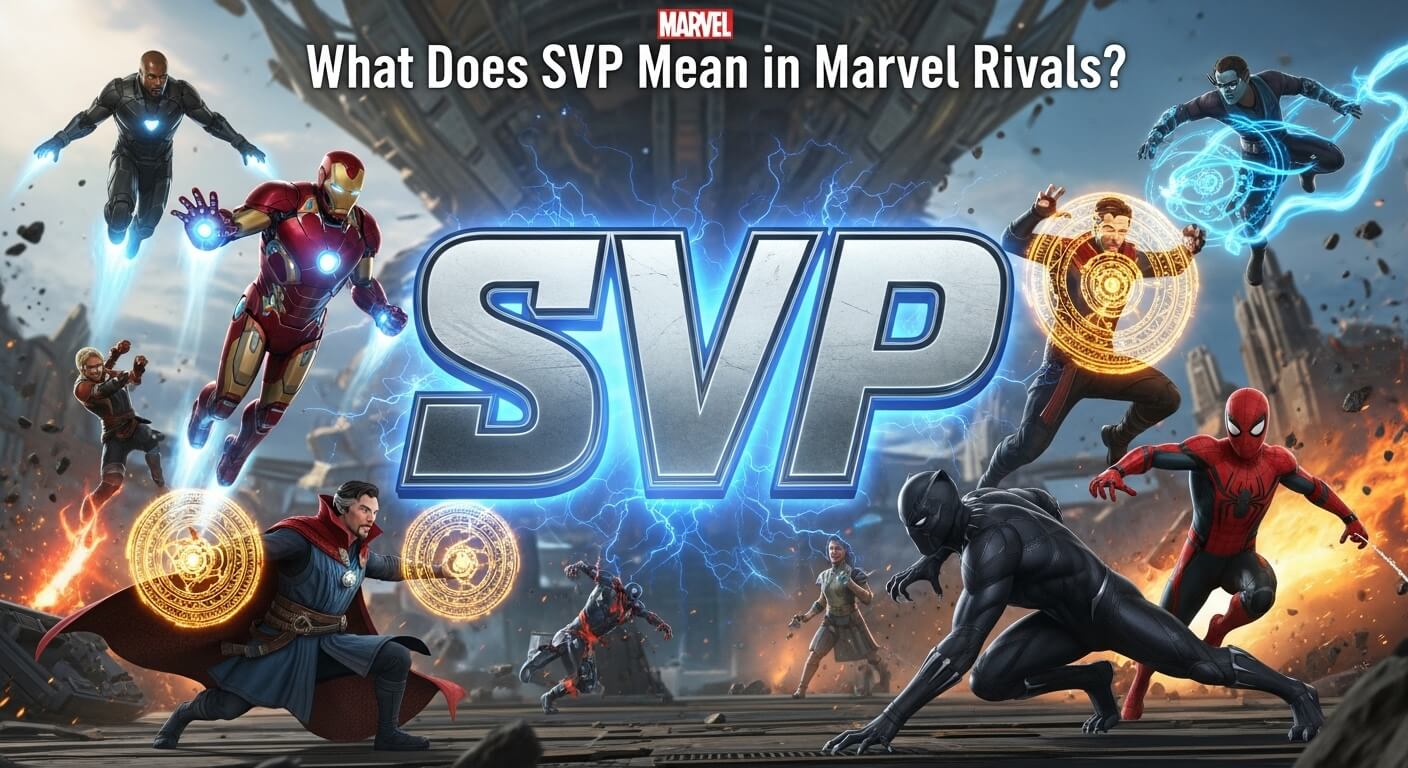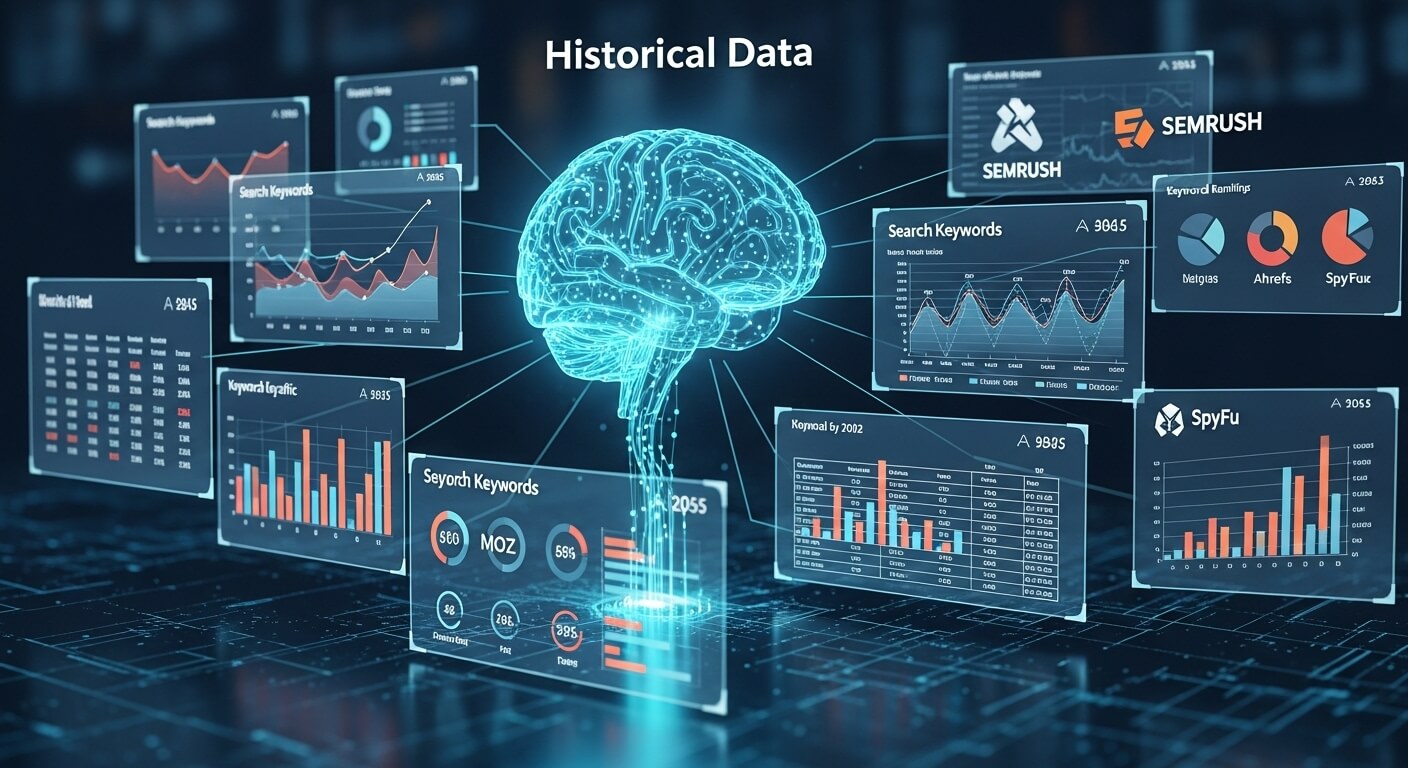Marvel Rivals, the dynamic 6v6 hero shooter developed by NetEase Games in collaboration with Marvel Entertainment, has captivated gamers since its December 2024 release. Featuring iconic Marvel superheroes and villains in team-based battles, the game blends strategy, synergy, and individual skill. At the end of each match, players are greeted with accolades like MVP and SVP, sparking curiosity among newcomers and seasoned players alike. If you’ve ever asked, “What does SVP mean in Marvel Rivals?” you’re in the right place. SVP stands for Second Valuable Player, an award given to the top-performing player on the losing team. It complements the MVP (Most Valuable Player) award, which goes to the best player on the winning team, offering recognition for standout efforts despite a loss.
This 3000-word guide (approximate word count: 3100) dives deep into the meaning, mechanics, strategies, and cultural significance of SVP in Marvel Rivals. We’ll explore its origins, how it’s calculated, tips for earning it, character recommendations, and its impact on ranked play. High-volume questions like “How do you earn SVP in Marvel Rivals?” and “Does SVP affect ranked points?” are answered, ensuring a comprehensive resource for players seeking to master this accolade and elevate their gameplay.
The Origins and Evolution of Marvel Rivals
To understand SVP’s role, it’s helpful to know Marvel Rivals’ background. Announced in March 2024 and entering closed alpha in May, the game draws inspiration from hero shooters like Overwatch and Valorant while weaving in Marvel’s rich lore. Set in a multiversal conflict where heroes and villains battle across dimensions, players choose from a roster of over 33 characters at launch, each with unique comic-inspired abilities.
NetEase prioritized accessibility and skill expression, incorporating destructible environments, team-up abilities (like Thor boosting Loki’s illusions), and varied modes to keep gameplay fresh. Post-match awards like MVP and SVP emerged during beta phases, responding to player feedback for highlights that echo Marvel’s cinematic and comic flair. Early modes included Convoy (escorting a payload), Domination (point control), and Convergence (a hybrid mode). Later, arcade modes like Doom Match (free-for-all with Doctor Doom mechanics) and Conquest (capture points with scaling power) added variety.
By August 2025, Marvel Rivals has evolved through Season 0 betas and Season 1 updates, introducing characters like Venom and Invisible Woman, plus maps like Wakanda Ruins and Tokyo 2099. SVP was introduced in the alpha to soften the sting of losses, especially in uneven matches, and refined by Season 2 (February 2025) to better reflect player contributions. The game’s meteoric rise, with millions of players, fuels searches like “When did Marvel Rivals release?” and underscores SVP’s role in its positive, performance-driven culture. Unlike traditional shooters, SVP emphasizes effort over victory, aligning with modern gaming’s focus on rewarding engagement.
Core Gameplay Mechanics in Marvel Rivals
Marvel Rivals’ gameplay revolves around three roles: Vanguards, Duelists, and Strategists. Vanguards are tanks, absorbing damage and controlling space; Duelists deal high damage and flank; Strategists heal and provide utility. These roles shape match dynamics and influence SVP calculations.
Matches last 5-15 minutes, depending on the mode. In Convoy, teams escort or block a vehicle; Domination involves holding a central point; Convergence blends point control with payload mechanics. Destructible maps, like Yggsgard or Hydra Elysium, allow abilities to reshape terrain, adding strategic depth. Movement varies by role—Vanguards have heavy but powerful traversal, Duelists are agile, and Strategists offer utility like shields or portals.
Character abilities include primaries, secondaries, passives, team-ups, and ultimates. For example, Wolverine’s claw slash is his primary, while his berserker rage ultimate delivers multi-target damage. Ultimates charge through eliminations, assists, and objective play, unleashing game-changing effects. Team-up abilities, unique to Marvel Rivals, enable combos like Iron Man enhancing Hulk’s gamma smash. Movement includes advanced techniques like wall-running for Vanguards or double-jumps for Duelists.
Objectives outweigh raw kills, encouraging teamwork over solo plays. The awards system, including SVP, evolved to prioritize holistic contributions—damage, healing, objective time, and clutch plays—over single metrics like accuracy. Season 2 updates refined ultimates and movement for balance, impacting how SVP is awarded.
Character Roles and Classes in Marvel Rivals
SVP is tied to performance within your role. The roster splits into three roles, each with distinct contributions that influence award calculations. Vanguards block damage and hold objectives, Duelists rack up eliminations, and Strategists keep teams alive with heals and buffs. Subclasses, like Dive Vanguards or Protect Strategists, add nuance.
Vanguard Characters (Tanks)
Vanguards absorb damage and control space, ideal for objective-focused play.
- Captain America: Shield-throwing defender with high mobility.
- Doctor Strange: Barrier-casting tank with magical crowd control.
- Doctor Doom: Energy-absorbing villain with shields and lasers.
- Hulk: Leaping giant with smashes.
- Invisible Woman: Force field specialist.
- Magneto: Magnetic pulls and barriers.
- Peni Parker: Mech-suited tank with drones.
- Venom: Symbiote dive tank with tentacles.
| Vanguard | Primary Ability | Ultimate | Playstyle |
|---|---|---|---|
| Captain America | Shield Throw/Bash | Energy Shield Ult | Objective Control, Mobility |
| Doctor Strange | Shield Portals | Portal Domination | Crowd Control, Utility |
| Hulk | Gamma Leap/Smash | Gamma Rampage | Dive Tank, High Damage |
| Invisible Woman | Force Fields | Invisibility Bubble | Protection, Invis Poses |
Duelist Characters (Damage Dealers)
Duelists focus on eliminations and pressure, excelling in kills and assists.
- Black Panther: Claw slashes, wall-running.
- Black Widow: Guns and invisibility.
- Cloak & Dagger: Teleport and dagger combos.
- Hawkeye: Precision arrows, scouting.
- Iron Fist: Chi-powered melee bursts.
- Magik: Portal-based damage.
- Moon Knight: Crescent darts, dives.
- Namor: Trident throws, squid summons.
- Psylocke: Psi-blades, agility.
| Duelist | Primary Ability | Ultimate | Playstyle |
|---|---|---|---|
| Black Panther | Vibranium Claws | Vibranium Burst | Mobility DPS |
| Black Widow | Dual Pistols/Invis | Widow’s Line Takedown | Stealth Assassin |
| Hawkeye | Precision Arrows | Hunter’s Mark Barrage | Long-Range Sniper |
Strategist Characters (Supports/Healers)
Strategists heal, buff, and control with utility.
- Cloak & Dagger: Supportive swaps (also Duelist).
- Invisible Woman: Shielding, invisibility.
- Loki: Illusions and healing.
- Luna Snow: Ice-based healing, shields.
- Mantis: Healing orbs, sleep darts.
- Rocket Raccoon: Turrets and heals.
| Strategist | Primary Ability | Ultimate | Playstyle |
|---|---|---|---|
| Invisible Woman | Force Shields | Invis Ult | Defensive Support |
| Loki | Illusions/Healing | God of Mischief | Trickster Utility |
| Luna Snow | Ice Heals/Shields | Frozen Symphony | Healing, Crowd Control |
What Is SVP in Marvel Rivals?
SVP, or Second Valuable Player, is awarded to the best performer on the losing team, mirroring the MVP award for the winning team’s top player. It recognizes exceptional individual contributions—whether through eliminations, healing, or objective play—despite the team’s defeat. Unlike MVP, which celebrates victory, SVP softens the blow of a loss, spotlighting players who shone under pressure.
The term “SVP” is unique to Marvel Rivals, though similar concepts exist in games like Valorant (Team MVP) or League of Legends (Honor system). It debuted in the closed alpha to encourage effort in lopsided matches, addressing complaints about matchmaking imbalances. By Season 2, SVP’s algorithm was refined to better weigh role-specific contributions, ensuring fairness across Vanguards, Duelists, and Strategists.
How Is SVP Calculated in Marvel Rivals?
The exact algorithm for SVP remains undisclosed, but community analysis and developer hints suggest it evaluates multiple metrics tailored to each role. Key factors include:
- Eliminations and Assists: Duelists earn points for kills and assists, with multi-kills or clutch eliminations boosting scores.
- Damage Dealt: High damage output, especially for Duelists, contributes heavily.
- Damage Blocked: Vanguards shine by mitigating enemy damage with shields or taunts.
- Healing Provided: Strategists are judged on healing output and clutch revives.
- Objective Time: Time spent on objectives like payloads or control points is critical.
- Deaths: Fewer deaths improve your score, reflecting survivability.
- Team-Ups and Ultimates: Effective use of synergistic abilities or game-changing ultimates adds weight.
For example, a Vanguard like Magneto might earn SVP by blocking thousands of damage points with magnetic barriers while securing objective time. A Duelist like Psylocke could claim it with a high kill/death ratio and multi-kills. A Strategist like Luna Snow might secure SVP with massive healing and well-timed shields. The system compares your performance to your teammates’, not the entire lobby, ensuring the best relative contributor on the losing team gets the nod.
Community speculation once suggested SVP reduced ranked point losses, but this was debunked—SVP is purely honorary, offering no direct ranked benefits. However, its visibility on the post-match screen boosts player morale and encourages consistent effort.
How to Earn SVP in Marvel Rivals
Earning SVP requires excelling in your role while contributing to team goals. Here are role-specific strategies to maximize your chances:
For Vanguards
- Hold Objectives: Stay on payloads or control points to rack up objective time.
- Block Damage: Use shields or taunts (e.g., Hulk’s roar) to absorb hits.
- Initiate Fights: Dive into teamfights to disrupt enemies, like Venom’s tentacle swings.
- Survive: Avoid reckless deaths to maintain presence.
- Example: As Magneto, pull enemies into choke points with magnetic fields, block damage, and secure objectives. A clutch ultimate like Magnetic Tempest can seal the deal.
For Duelists
- Secure Kills: Prioritize eliminations, especially multi-kills or finishing blows.
- Flank Effectively: Use mobility (e.g., Black Panther’s wall-running) to catch enemies off-guard.
- Minimize Deaths: Stay alive to maximize damage output.
- Example: As Moon Knight, land crescent darts for crowd damage and use your dive ultimate to wipe key targets, boosting your kill/assist tally.
For Strategists
- Maximize Healing: Keep teammates alive with consistent heals (e.g., Luna Snow’s ice orbs).
- Clutch Utility: Time shields or buffs (e.g., Invisible Woman’s force fields) for critical moments.
- Assist in Kills: Use debuffs or setups to aid Duelists.
- Example: As Mantis, heal aggressively and use sleep darts to disrupt enemy ultimates, contributing to teamfight wins.
General Tips
- Play the Objective: Even Duelists should prioritize payloads or points over chasing kills.
- Use Ultimates Wisely: Save ultimates for pivotal moments, like stopping a payload push.
- Communicate: Coordinate with teammates via voice or pings for synergistic plays.
- Adapt: Adjust to the enemy team’s composition—counter snipers with flanks or tanks with burst damage.
- Leverage Team-Ups: Pair with synergistic heroes (e.g., Rocket Raccoon with Groot) for bonus effects.
Popular searches like “How to get SVP in Marvel Rivals?” highlight the desire for practical tips. Focus on role mastery and objective play, as solo kill-chasing rarely secures SVP.
Best Characters for Earning SVP in Marvel Rivals
Certain characters’ kits make them SVP magnets due to their ability to rack up stats. Based on community tier lists and match data, here are top picks per role:
Vanguards
- Magneto: High damage blocking and crowd control make him a stat machine.
- Hulk: Massive health and objective presence ensure high impact.
- Peni Parker: Drones and shields rack up assists and blocked damage.
Duelists
- Psylocke: Agile with high-damage psi-blades, perfect for kill streaks.
- Moon Knight: Crescent darts and dives lead to multi-kills.
- Black Panther: Wall-running and burst damage excel in flanking.
Strategists
- Luna Snow: High healing output and shields shine in stats.
- Invisible Woman: Force fields and invisibility rack up utility points.
- Mantis: Healing orbs and sleep darts contribute to assists and saves.
Characters with versatile kits, like Cloak & Dagger, can flex between Duelist and Strategist roles, boosting SVP chances through hybrid contributions. High-volume queries like “Best characters for SVP in Marvel Rivals?” often point to Magneto and Psylocke for their stat-friendly playstyles.
Does SVP Affect Ranked Points?
A common question, “Does SVP prevent ranked point loss in Marvel Rivals?” has sparked debate. Early beta rumors suggested SVP players lost fewer ranked points or none at all, but this was clarified by Season 1: SVP is purely cosmetic and does not alter ranked point losses. All losing team members lose points, typically 10-20 depending on rank tier (Bronze to Grandmaster), unless a loss prevention shield (earned after multiple losses) is active. Community speculation persists that SVP might subtly influence matchmaking or future rewards, but no evidence supports this. For now, SVP is a badge of honor, not a mechanical advantage.
The Cultural and Gameplay Impact of SVP
SVP’s inclusion reflects Marvel Rivals’ emphasis on positivity. Losing can feel demoralizing, especially in ranked, but highlighting the best loser softens the blow and encourages effort. This aligns with modern gaming trends, where mental health and player retention are priorities. SVP also fosters healthy competition, as players strive for recognition even in defeat.
However, some criticize SVP for promoting individualism in a team-based game. Focusing on personal stats could lead to kill-chasing or ignoring objectives, though the algorithm’s objective weighting mitigates this. Compared to other shooters, SVP is unique—Overwatch’s Play of the Game highlights moments, not overall performance, while Valorant’s Team MVP is closer but less prominent. SVP’s visibility on the post-match screen, complete with character poses, adds a Marvel flair, tying to the comics’ dramatic showdowns.
By Season 2, community feedback has pushed for potential SVP rewards, like bonus XP or cosmetics, though NetEase has prioritized balance patches. Searches like “Why does SVP matter in Marvel Rivals?” underscore its role in maintaining engagement, especially in competitive play.
Controversies and Community Perspectives
SVP isn’t without controversy. Some players argue it rewards mediocrity, as the losing team’s top performer may still underperform compared to the winning team. Others see it as a vital morale booster, especially in matches with unbalanced teams. The lack of transparency in SVP’s algorithm fuels debate—players want clear criteria, like exact weights for kills versus objective time. NetEase has hinted at future stat breakdowns, but as of August 2025, details remain vague.
Community discussions also highlight SVP’s role in toxic behavior. Some players chase SVP by stat-padding (e.g., spamming abilities for damage), neglecting team synergy. Conversely, SVP can counter toxicity by rewarding positive contributions, encouraging players to stay engaged. High-volume searches like “Is SVP in Marvel Rivals fair?” reflect this divide, with forums split on its value versus potential for misuse.
Future of SVP in Marvel Rivals
Looking ahead, SVP could evolve with Marvel Rivals’ roadmap. Season 2 introduced new characters and maps, with Season 3 (expected May 2025) likely to refine awards further. Community suggestions include tying SVP to minor rewards, like battle pass progress, or displaying detailed stat breakdowns post-match. As the roster grows—potentially adding X-Men like Jean Grey or villains like Ultron—SVP’s algorithm may adapt to new roles or subclasses.
NetEase’s focus on esports, with tournaments planned for late 2025, could elevate SVP’s visibility, spotlighting standout players in losing teams during streams. Searches like “Will SVP get rewards in Marvel Rivals?” suggest players hope for tangible benefits, though the current focus remains on balance and content.
Frequently Asked Questions About SVP in Marvel Rivals
- What does SVP stand for in Marvel Rivals?
SVP means Second Valuable Player, awarded to the top performer on the losing team. - How is SVP different from MVP in Marvel Rivals?
MVP goes to the best player on the winning team, while SVP recognizes the best on the losing team. - How do you earn SVP in Marvel Rivals?
Excel in your role—Vanguards block damage, Duelists secure kills, Strategists heal—while prioritizing objectives and minimizing deaths. - Does SVP prevent losing ranked points in Marvel Rivals?
No, SVP is honorary and doesn’t reduce ranked point losses, though loss prevention shields can. - Which characters are best for earning SVP?
Magneto, Psylocke, and Luna Snow excel due to their stat-friendly kits in tanking, damage, and healing. - Why does Marvel Rivals have SVP?
SVP rewards effort in losses, boosting morale and encouraging consistent performance. - Can you get SVP in Quickplay and Competitive modes?
Yes, SVP is awarded in both modes, based on the same performance metrics. - What stats matter most for SVP?
Eliminations, assists, damage dealt/blocked, healing, objective time, and low deaths are key. - Is SVP in Marvel Rivals fair?
It’s debated—some see it as a morale booster, others as rewarding mediocrity due to unclear criteria. - Will SVP get rewards in future Marvel Rivals updates?
No rewards are confirmed, but community feedback suggests potential XP or cosmetic bonuses.
Conclusion
SVP in Marvel Rivals is more than a consolation prize—it’s a testament to individual excellence in the face of defeat. By rewarding the top performer on the losing team, it encourages players to give their all, whether tanking as Hulk, flanking as Psylocke, or healing as Luna Snow. While purely honorary, SVP’s visibility fosters a positive culture, aligning with Marvel Rivals’ blend of comic flair and competitive depth. From its beta origins to its role in Season 2, SVP remains a unique feature, sparking both praise and debate. Whether you’re chasing it for bragging rights or aiming to climb ranks, understanding SVP’s mechanics and strategies can elevate your game. As Marvel Rivals grows, SVP will likely evolve, continuing to highlight the heroes who shine, win or lose.

The editor of All-AI.Tools is a professional technology writer specializing in artificial intelligence and chatbot tools. With a strong focus on delivering clear, accurate, and up-to-date content, they provide readers with in-depth guides, expert insights, and practical information on the latest AI innovations. Committed to fostering understanding of fun AI tools and their real-world applications, the editor ensures that All-AI.Tools remains a reliable and authoritative resource for professionals, developers, and AI enthusiasts.



